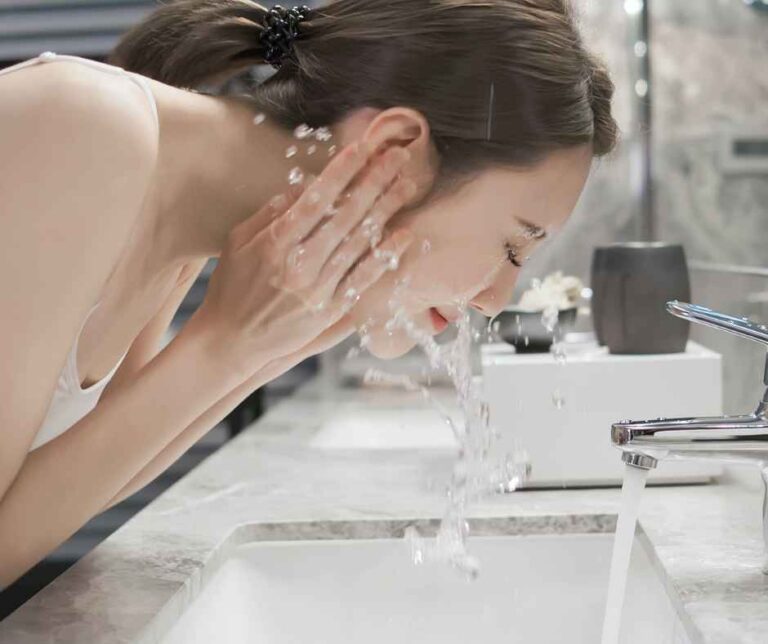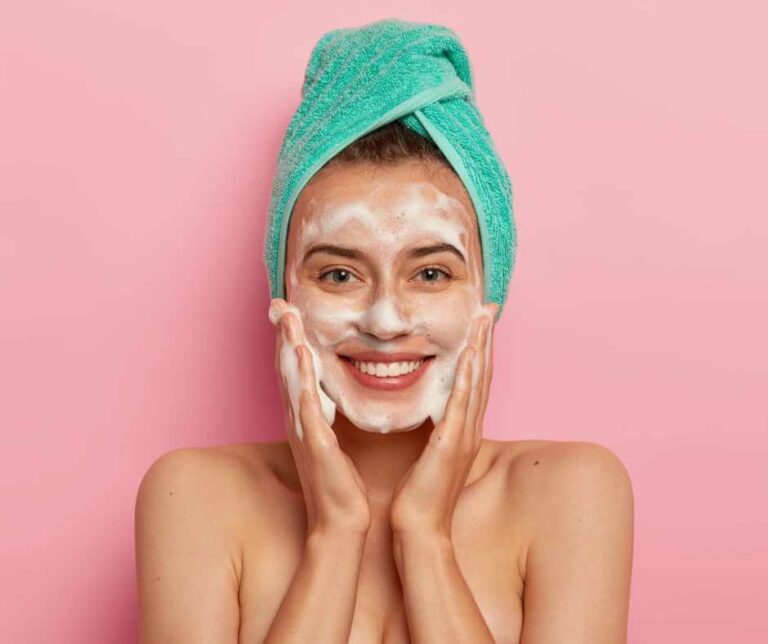How To Get Rid Of Melasma For Asian Skin?


Are you noticing new blotchy, brownish patches on your face that were not there before?
You look in the mirror, and after thorough observation, you wonder to yourself, ” What is going on? I didn’t have this before!”
Melasma is a common skin condition characterized by dark patches on the face and is a significant concern for many individuals, especially with Asian skin.
Have you ever wondered why melasma affects Asian skin differently compared to other skin types?
What unique challenges do Asians face when dealing with melasma?
Unfortunately, there is no definitive treatment that will automatically make melasma disappear.
But fortunately, we can shed some light about your concerns and explore effective strategies to address this dermatological problem.
What Is Melasma?
Melasma is an acquired hyperpigmentation that targets sun-exposed areas, especially common among Asians. Unfortunately, there is no cure for melasma.
It can present as appear as:
- symmetrical
- patches
- blotchy
Areas that receive excessive sun exposure includes:
- forehead
- upper lip
- cheeks
- chin
However, melasma can occasionally occur in other sun-exposed locations like the neck, chest and even forearms.
What Are The Causes Of Melasma?
The causes of melasma are multi-factorial.
- Female
- 9:1 ratio compared to males
- hormonal
- pregancy – Chloasma aka the “mask of pregnancy”
- increases with the use of oral contraceptive pills
- Sun Exposure
- climatic factors – especially tropical heat, humidity, UV radiation
- UV rays trigger melanin production
- Light-brown skin
- especially Fitzpatrick Skin Type III and IV
- Age
- rare before puberty
- reproductive years
NOTE: Exactly which hormones and what mechanisms are involved which lead to melasma are yet to be determined.
It seems like the 2 most important influences are genetics and hormones in combination with ultraviolet radiation.
Where Is The Origin Of Melasma?

Epidermis – top layer of skin
- melanin pigment produced by the melanocyte cell, which is found at the bottom part of the epidermis
Why Are Asians More Prone To Melasma?
While pigmentation can affect any skin colour, Asians tend to be more prone to sun exposure due to climatic factors.
- skin is exposed to UV rays
- hormones are triggered
- increased melanin production
- skin inflammation causes over-activity
When there is an overflow of the melanin pigment, your body’s inability to spread them out effectively will lead to clumping and the appearance of dark spots.
What Can I Do To Prevent Melasma?
One of the mainstays to prevent melasma is simply just to stay away from the sun!
Easier said than done, though.
Excessive sun exposure, especially in Asian country locations, is difficult to avoid as is.
To protect your skin from harmful UV rays, it’s essential to take preventive measures.
Sun protection is one of the most overlooked and underappreciated strategies.
As a general rule, the frequency of applying sunscreen daily is more important than the SPF value and PA grading. A good starting point is to use a sunscreen with SPF 20 and PA++, and then gradually increase consistent reapplication during the day as you make it a habit.
From using sunscreen with high SPF to seeking shade during peak sunlight hours, incorporating these practices into your daily routine can help you enjoy the outdoors safely.
What Topical Skin Care Can Help Fight Melasma?
There are plenty of over-the-counter products that can combat melasma.
There are few common active ingredients that are used in some of these products, such as marine collagen extract, hyaluronate, and Vitamin C.
These ingredients lighten and fade darkened skin patches by slowing the production of melanin as well as hydrate and replenish at the same time, allowing dark spots to gradually fade over time.
- Vitamin C
- skin lightening effects and antioxidant properties
- educing melanin synthesis
- counteracts effects of UV-induced skin damage
- Vitamin E
- protects the skin from deleterious effects of solar radiation
- inhibits tyrosinase, an enzyme responsible for production of melanin
- increases intracellular glutathione, known for pigmentation reducing properties
- Topical Retinoids
- derived from Vitamin A
- anti-pigmentation
- anti-oxidant
- ultraviolet (UV) filter
- Hydroquinone
- inhibits tyrosinase, the enzyme responsible for melanin synthesis
- used as a topically applied cream to treat areas of uneven skin tone
- best results occur when using hydroquinone as a combination therapy together with retinoid and corticosteroid
- require a doctor’s prescription
- usage has to be under a doctor’s orders and has to be followed up closely by a doctor during the course of usage
- adverse effects may include irritation, redness, stinging and even ochronosis, a grey-blue discoloration of the skin
- Cysteamine
- usually known anti-melanoma, anti-mutagenic, anti-carcinogenic
- effective in decreasing melanin content of lesions
- 5% cream
By incorporating any of these into your regular skincare routine, you are committing to protecting your skin from environmental damage and slowing down the inevitable aging process.
Where Does Medical Laser Treatment Target Under The Skin?

Generally, lasers used to target and remove excess pigment within the skin. This allows a proper distribution of our natural melanin and improvement overall skin tone.
It involves a combination of high peak power, short pulse duration, and deep levels of penetration.
As the treatment is non-invasive by nature, one can walk in and walk out without any laser downtime.
What Are the Effects Of Skin Boosters?
Skin boosters are deposited into the dermal layer of your skin using a fine needle depositing a product into the dermal layer of the skin through a series of micro-injections.
It’s a quick procedure with minimal bruising aimed at targeting the areas of concern.
- repairs sun-damaged skin
- slows down aging at cellular level
- improves acne scars by increasing collagen content of damaged skin cells
The most common skin booster in the market is made of hyaluronic acid.
- provides hydration
- increases moisture levels
- increases collagen production
- retains water for longer lasting hydration
Oral Supplements
- Tranexamic acid
- current oral dosing is significantly less than doses used to treat hemophilia, heavy menstrual bleeding, or other hemorrhagic conditions
- Polypodium leucotomos
- fern of the Polypodiaceae family
- effective in protecting one’s skin from the harmful effects of solar radiation
- commonly used to treat eczema, sunburn, psoriasis
The Bottom Line
Ultimately, there is no one best approach for pigmentation treatment.
So many factors come into play
- depends on the severity of your condition
- the time and budget you have
- location and environment
- your daily routines
- suitability of a particular treatment catered specifically towards your needs
The main takeaway is just being comfortable in your own skin and making sure you are taking the right precautions for gradual improvement.
Noticing the changes in your skin condition and addressing the issues sooner than later will help prevent further damage that could potentially become irreversible.






